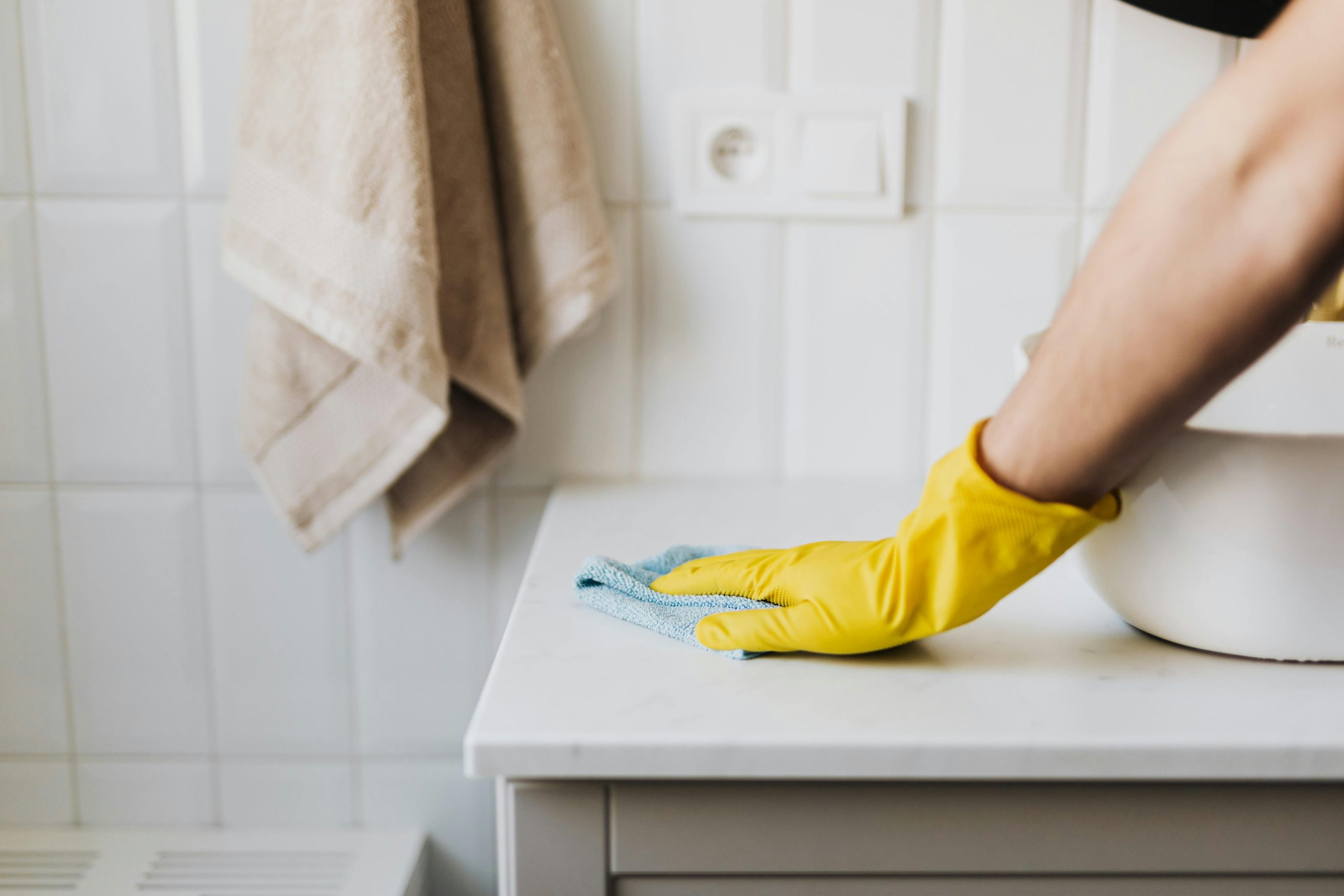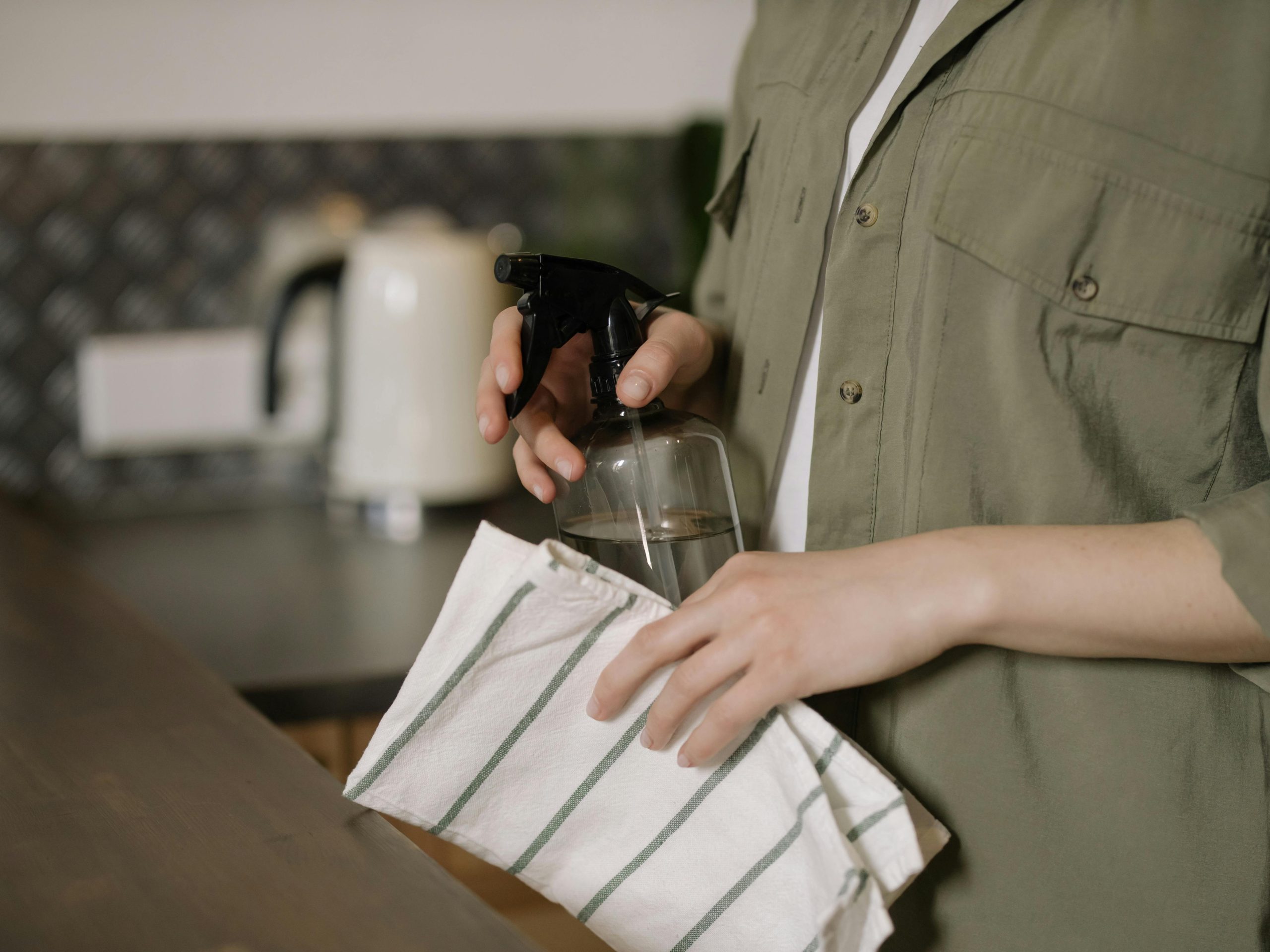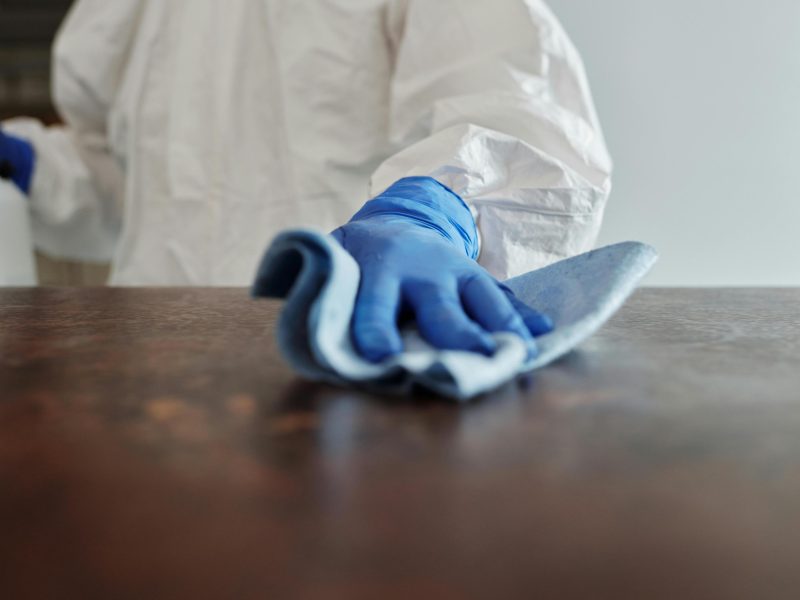Vinegar is a versatile and eco-friendly cleaner, widely praised for its ability to tackle grime, deodorize, and disinfect surfaces. Its non-toxic nature makes it a favorite for households looking to reduce chemical exposure. However, while vinegar is safe for many areas, using it on the wrong surfaces can lead to damage. Understanding what not to clean with vinegar ensures you can maintain a safe, effective cleaning routine without accidentally harming your home.
Even those who regularly use vinegar for home cleaning—especially if they follow guides on how to clean with vinegar—need to know the exceptions. Below, we cover the surfaces, materials, and scenarios where vinegar is not recommended, along with safe alternatives and precautions.
1. Natural Stone Surfaces

Natural stone surfaces, including marble, granite, limestone, and travertine, are highly sensitive to acidic cleaners like vinegar. Acid can etch and dull the surface, leaving permanent marks.
Why Avoid Vinegar:
- Vinegar’s acidity reacts with calcium carbonate in stones, causing erosion.
- Can dull polished finishes over time.
- Leaves streaks and potential watermarks.
Alternatives:
- Use a mild, pH-neutral stone cleaner.
- Soap and water are safe for regular maintenance.
- Seal natural stone regularly to protect it from accidental spills.
Tip: Always test any cleaner in an inconspicuous area before using it on the entire stone surface.
2. Hardwood Floors
Vinegar is often touted as a floor cleaner, but it’s not suitable for most hardwood floors, especially those with a polyurethane finish.
Why Avoid Vinegar:
- Acidic nature can wear down the protective finish over time.
- Frequent use may lead to dull spots or discoloration.
- Excess liquid can seep into seams and cause warping.
Safe Alternatives:
- Use a hardwood floor cleaner specifically designed for your floor type.
- Microfiber mop with water and a small amount of gentle soap.
- Dry or slightly damp cleaning methods to avoid excess moisture.
Tip: Avoid soaking wood floors with vinegar-based solutions. Quick, minimal liquid application is key.
3. Cast Iron Cookware
Cast iron requires careful care to maintain its seasoning and prevent rust. Vinegar can strip protective oils and damage the surface.
Why Avoid Vinegar:
- Removes seasoning layers that prevent sticking.
- Promotes rust formation if not dried and oiled immediately.
Safe Alternatives:
- Use warm water and mild soap sparingly.
- Scrub with a soft brush or salt for stubborn residues.
- Dry thoroughly and reapply a thin layer of oil after cleaning.
Tip: For a natural deodorizer and cleaner, avoid soaking cast iron in vinegar solutions.
4. Aluminum and Certain Metals
Vinegar’s acidic properties can corrode metals such as aluminum, brass, and copper if left for too long.
Why Avoid Vinegar:
- Can leave pits, streaks, or discoloration.
- Prolonged exposure may permanently damage the surface.
Safe Alternatives:
- Use metal-specific cleaners or gentle dish soap.
- Lemon juice or baking soda can be a short-term, controlled alternative for polishing.
Tip: Always rinse and dry metals immediately after cleaning to avoid corrosion.
5. Egg Stains
Although vinegar can clean many organic stains, it is not effective for stubborn egg residue. In fact, using vinegar on cooked egg can make proteins bond more tightly to surfaces.
Why Avoid Vinegar:
- Does not break down protein-based stains effectively.
- Can make cleaning more difficult by hardening residue.
Safe Alternatives:
- Use warm water and dish soap to soften and remove egg residue.
- Soak utensils or pans briefly in soapy water before scrubbing.
6. Electronic Screens and Devices

Vinegar is acidic and can damage screen coatings or sensitive electronics.
Why Avoid Vinegar:
- Can strip anti-glare coatings on monitors, tablets, and phones.
- Liquid exposure may seep into devices and cause malfunctions.
Safe Alternatives:
- Use microfiber cloths with water or electronic-safe screen cleaners.
- Spray cleaners onto cloth, not directly on the screen.
Tip: Light, controlled application prevents streaking and damage.
7. Sealed or Finished Wood Furniture
While vinegar works on unfinished wood surfaces for minor cleaning, it can damage sealed, varnished, or lacquered furniture.
Why Avoid Vinegar:
- May strip finish or dull the sheen.
- Can leave streaks or sticky residues.
Safe Alternatives:
- Use furniture polish or mild soap diluted in water.
- Microfiber cloths for dusting and spot cleaning.
Tip: Test cleaners on a hidden area to ensure compatibility with your furniture’s finish.
8. Rubber Seals and Gaskets
Vinegar can deteriorate rubber over time, making seals in appliances less effective.
Why Avoid Vinegar:
- Can cause cracking or brittleness.
- Reduces elasticity and may lead to leaks in appliances.
Safe Alternatives:
- Use warm, soapy water to clean rubber components.
- Wipe dry thoroughly to maintain flexibility.
Tip: Avoid prolonged soaking of gaskets or rubber seals in vinegar solutions.
9. Stone Countertops With Acid-Sensitive Surfaces
Quartz, some engineered stones, and other acid-sensitive countertops may react poorly to vinegar, leading to dullness or scratches.
Why Avoid Vinegar:
- Etching can leave permanent marks.
- Acid weakens sealants over time.
Safe Alternatives:
- Mild soap and warm water for daily cleaning.
- Commercial cleaners designed for quartz or engineered stones.
Tip: Always check manufacturer cleaning guidelines before applying vinegar or other acidic cleaners.
10. Delicate Fabrics
Vinegar is often used in laundry for deodorizing, but delicate fabrics like silk, wool, or lace may be damaged by its acidity.
Why Avoid Vinegar:
- Can weaken fibers or alter colors.
- May cause pilling or texture changes over time.
Safe Alternatives:
- Use gentle, fabric-specific detergents.
- Cold water washes with mild soap protect delicate fibers.
Tip: Spot-test any natural cleaner before full application on delicate fabrics.
How to Clean With Vinegar Safely
Vinegar is a versatile, natural, and eco-friendly cleaning agent, but its acidic nature means it must be used thoughtfully to avoid damage. When used correctly, vinegar can tackle stains, deodorize, and disinfect a variety of surfaces. Follow these detailed tips to make the most of vinegar without compromising your home’s surfaces.
- Dilute Properly
Vinegar is highly acidic, so straight vinegar can be too strong for many surfaces. A typical safe ratio is 50/50 with water for general cleaning. For more delicate areas, such as painted surfaces or lightly finished wood, consider diluting even further to 1 part vinegar to 3 parts water. This ensures cleaning power without risking discoloration or etching.
- Apply Lightly, Don’t Soak
Use a spray bottle to lightly mist the surface rather than pouring vinegar directly. Excessive liquid can seep into seams, grout lines, or cracks, potentially causing damage or leaving a strong odor behind. A microfiber cloth or sponge works best to spread the solution evenly.
- Avoid Prolonged Contact With Sensitive Materials
Even diluted vinegar should not sit on sensitive materials like natural stone, hardwood, or certain metals. Apply the solution, wipe it down promptly, and never leave it to air-dry on these surfaces. For areas like stainless steel or glass, a brief wipe and rinse usually suffice.
- Use Vinegar With Baking Soda for Tough Stains
On surfaces safe for vinegar, combining it with baking soda can tackle stubborn grime, soap scum, or clogged drains. For example:
- Sprinkle baking soda on a stovetop or sink, then spray lightly with vinegar to create a fizzing reaction.
- Let it sit for a few minutes before scrubbing gently with a sponge or brush.
This method is highly effective for ceramic sinks, tubs, and tiles, but avoid using it on stone surfaces.
- Rinse or Wipe After Cleaning
After cleaning with vinegar, always rinse the area with water or wipe it thoroughly with a damp cloth. This prevents sticky residue, lingering vinegar odor, and potential long-term effects on sensitive surfaces.
- Ventilation Matters
When cleaning with vinegar in enclosed spaces, ensure proper ventilation. Open windows or turn on fans to disperse fumes, especially when combining vinegar with other safe cleaning ingredients like essential oils. Good airflow reduces strong odors and improves safety.
- Target Specific Cleaning Tasks
- Glass and Mirrors: Use a 50/50 vinegar-water solution for streak-free shine. Wipe with a microfiber cloth.
- Kitchen Surfaces: Safe on laminate or sealed counters; avoid stone.
- Floors: Tile, vinyl, and linoleum respond well to diluted vinegar. Hardwood requires caution.
- Bathroom Fixtures: Removes soap scum and mineral deposits safely on ceramic and chrome.
By following these guidelines, you can enjoy all the benefits of vinegar as a natural, non-toxic, and cost-effective cleaner while avoiding potential damage. Understanding what not to clean with vinegar and implementing these safety tips ensures your home stays sparkling, safe, and eco-friendly.
Conclusion
Vinegar is a versatile and sustainable solution for household cleaning, but knowing its limitations is crucial. Avoid using it on sensitive surfaces like natural stone, hardwood floors, electronics, metals, and delicate fabrics to prevent damage. Instead, pair vinegar with safe cleaning alternatives and follow the proper techniques outlined in this guide. With careful attention, vinegar can remain a staple in your cleaning routine, keeping your home safe, fresh, and sparkling.

